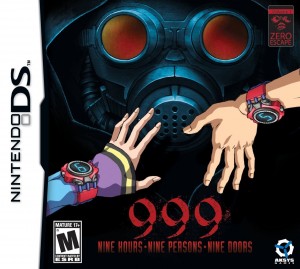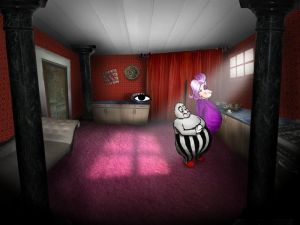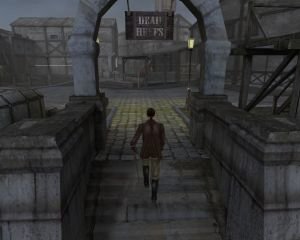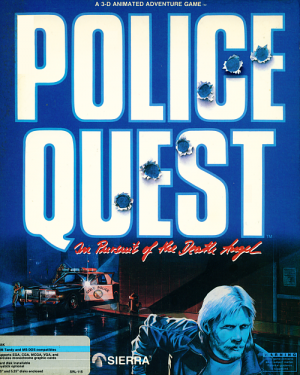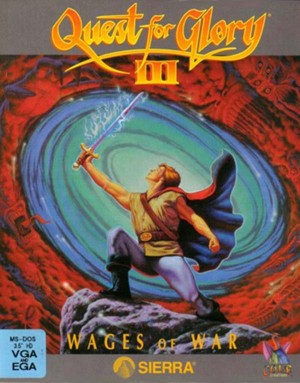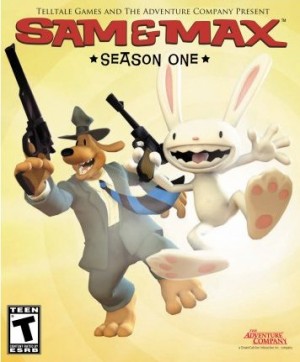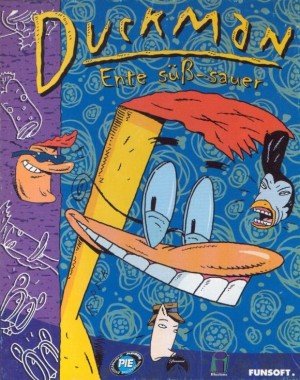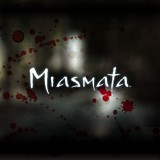Review for 999: Nine Hours, Nine Persons, Nine Doors page 2
If a picture is worth a thousand words, apparently a number is worth tens of thousands. Or even hundreds of thousands if that number is nine. Numbers are quite literally at the root of ChunSoft’s 999: Nine Hours, Nine Persons, Nine Doors. This part-visual novel / part-adventure for the Nintendo DS represents a grand game of life and death for a group of abducted participants. The clock is ticking on a possible escape, and the blood-red numbered doors that stand between them and freedom are protected by deadly hexadecimal math-based traps. That may sound a lot like school (it’s certainly how I remember mine), but it’s a fascinating premise that’s rife with potential: a maniacal madman with a passion for puzzles, random strangers forced to cooperate with people they can’t fully trust, and an intriguing pseudo-scientific backstory about the powers of collective consciousness. But is it able to fully realize its abundant promise? Nein!... I mean, no. Alas, the many positive elements are somewhat countered by tedious storytelling technique and one of the worst endgame scenarios ever devised. There is still much to like in 999, but the numbers don’t always add up.
The story begins where so few stories do: in the middle – both chronologically and numerically speaking. A young college student named Junpei wakes up, groggy and disoriented, in a locked room resembling an old ship’s cabin. Strapped to his wrist is a watch-like device showing only the number “5”. There’s no time to ponder the meaning of this mystery, however, as the porthole soon cracks, allowing water to flood in. Attached to the door is some kind of passcode-protected card reader, but where are the cards and what is the code? Figuring that out is just the first of many challenges in 999 that follow the same basic formula of locked doors and logic puzzles. You’ll need a calculating mind to overcome them all, and a whole lot of patience as well, because interspersed between (and often during) these sporadic gameplay sequences are long, long, LONG periods of expositional narrative that move the story along at a glacial pace that belies the urgency of the situation.
“Glacial” is an appropriate word, as you may just be on board the Gigantic, lesser-known sister of the Titanic that became a WWI hospital ship. But Junpei is not alone, as he soon meets up with eight fellow captives. Like many Japanese adventures, 999 features a colourful and eclectic cast of personalities, including a pigtailed, pink-haired little girl named “Clover”, her blind older brother, a scantily-clad dancer, and an oafish brute with amnesia. There’s also a pretty young woman named Akane, whom Junpei recognizes as a dear childhood friend he hasn’t seen for many years but still has fond feelings for. Each person is similarly numbered between 1-9, and at last your host introduces himself over the loudspeaker as “Zero”. You’ve been chosen to compete in the “Nonary Game”, he says, and the goal is simple: reach the #9 exit and live; fail to do so and die. The catch is, all numbered doors can only be opened by 3-5 people whose numbers equal the digital root displayed. If the mere thought of that makes your brain’s left hemisphere ache, rest assured that the principle is explained in detail and quickly becomes intuitive. (And if not, a built-in calculator will help you through.) Oh, and there’s only nine hours left before the ship joins its twin at the bottom of the ocean… But no pressure!
Actually, there is no real pressure. 999 isn’t timed at all, as the hours lapse in predetermined increments no matter how long you take. That’s good, because a TON of time is wasted with endless yakking between the characters themselves. Let’s be clear here: my criticism is not that there’s so much dialogue, period. I enjoy reading and will gladly delve deeply into a compelling story. And indeed there are some juicy moments served up here. The extraordinary circumstances allow for an interesting character study of people coping with fear and pain, conflict and cooperation, desperately seeking some understanding behind the purpose of their entrapment. And when various tragedies strike their ranks, the paranoia is ratcheted up even further, fuelling suspicion and raising all-new unanswered questions. Where the storytelling goes off the rails is its insistence on digressing into banal, socially awkward and emotionally stunted exchanges that do nothing but kill the tension with wasted filler. Far too much of the script is better suited to cheap reality television than a gritty, panic-inducing thriller. Even the game’s own narration acknowledges the tendency: with the first ninety minutes towards deadline already wasted, “all they had to show for it was impatience.” I know how they felt.
While the translation from the original Japanese is nearly flawless, the writing itself is in desperate need of editing. Even on a good day, we don’t need yet another groan-inducing description of dinner plates or topical mini-lectures on each and every library shelf we’re forced to examine, let alone during a life-threatening emergency. Even the simplest of exchanges can be drawn out interminably. After discovering a picture, someone chimes in with a helpful suggestion: “What’s the date of the photograph?” To which Junpei, suddenly incapable of rational thought, replies, “It doesn’t have one.” “Did you look on the back?” “The back?” “Yes. The reverse. The other side.” Argh! Good thing there isn’t a death timer counting down the seconds with this kind of snappy dialogue. What’s worse is that regardless of the topic, 999 is relentless in stating and repeating the same details over and over again. To a certain extent that’s beneficial for handheld games, which are often played in fits and starts while on the go. But this is not a story that lends itself to short bursts, and constant repetition is no substitute for a decent recap (which isn’t available). The continual harping on identical topics time and time again is tiresome and serves no purpose but to bang you over the head with the obvious. It’s relentless and tiresome in its constant repetition of things you already know, rehashing the same things time after time. (See what I did there?)
While plenty of conversation is rightly devoted to speculation about Zero’s identity and whether anyone in the group has hostile intentions of their own, a secondary theme of “morphogenetic fields” is soon introduced. You may never have heard of it, but everyone in Junpei’s party knows a story and expounds at length about scientific experiments that somehow relate to the theory of invisible fields of communication on a cellular level. The subject matter is obviously building towards something, often curiously weaving ancient Egyptian and Titanic lore into the mix, but for the longest time these conversations exist only as lengthy, disconnected anecdotes that are totally misplaced given the desperation of the situation. The concept itself is not hard to understand, and at first you’ll be curious to see where it leads. Unfortunately, the payoff is anything but worthwhile. Without giving anything away, the story takes a completely nonsensical turn for the absurd at the end. Wait, no – correction: the real end. Only those players willing to play the game through at least twice will ever get to see it play out in full, and probably several more times unless you’re extremely lucky or consult a walkthrough ahead of time. But more on 999’s abysmally-imposed “replay value” shortly.
Fortunately, the game is more successful when it remembers it’s a game. Once freed from the shackles of the latest yakathon, you’ll get the chance to explore your immediate surroundings in search of the next available exit. Locations are always quite confined, as Zero has restricted your movements to a sequentially-planned route, but over time you’ll discover the ship’s wheelhouse, communications room, and casino, among others. Each new area has a handful of screens to scour for items and clues to solve another round of puzzles. Junpei’s first-person perspective lets you rotate the camera in set increments using either the +Control pad or onscreen arrows, and selecting interactive items is as simple as tapping on them with the stylus. The first click highlights a hotspot while the second elicits either an action or observation, or switches to a closer view. Camera angles can be a little disorienting at first, and at times it’s hard to “see” key objects, so it’s important to be thorough. An overhead map view is available, but it can’t be left on the top screen as you explore, as the designers inexplicably opted to show the same view on each screen by default.
Objects you can carry are automatically added to your inventory, where you can rotate them in a 3D close-up view or examine them for more detail by clicking the “search” button, which sometimes yields necessary information. Most items are everyday tools with intuitive uses, like matches, screwdrivers, and key cards, but occasionally you’ll need to be more creative, combining items to construct dry ice explosives or prepare a telegraph machine for transmission. An icon of the current item is displayed onscreen and stays active until you switch to another, but objects are easily scrolled through without ever opening the inventory. Relevant documents are stored as well, allowing you to revisit useful clues or refresh your understanding of crucial concepts, though once again you usually can’t keep them visible on the top screen while you interact with puzzles on the touch screen. I frequently found myself jotting down notes of symbols, directions, and number charts, since the game’s own reference tools are so needlessly inconvenient.
You’ll need these clues to make any kind of progress, as 999 frequently layers its puzzles. Passcodes are often required, but you’ll need to piece clues together in clever ways. A laboratory displays bottles of formulaic elements, nautical charts outline directional shipping routes, and geometric shapes conceal secrets that mean nothing on their own. Tasks can be surprisingly diverse, too, as you’ll decipher Morse code, play musical tunes on a faulty instrument, and manipulate a crane across a grid-based floor plan in a limited number of moves. If there’s a… uhh… common denominator to 999’s puzzles, however, it’s math. You definitely don’t need to be Einstein to work them out, but the vast majority of obstacles have a numerical component. You’ll balance weights, convert letters to numbers in base-10, play a lite version of Baccarat, and frequently mix-and-match digital roots. The rare twiddleware puzzle involves math as well, as a difficult Lights Out variant first demands working out the desired equation. Even the climactic challenge is a game of Sudoku. I don’t normally… errr… equate math with fun, but the puzzles here are very fair and presented in an entertaining way. If you do ever get stuck, the game begins supplying increasingly pointed hints whenever you unsuccessfully back out of puzzle screens.
It’s a good thing 999 is entertaining to play, as it’s certainly not much to look at or listen to. Despite being aboard a luxury ocean liner, the only grandeur you’ll see is a central staircase, as you’ll spend more time roaming bland kitchens, dull hospital rooms, and boring boiler rooms. Character models are more attractive, but even they are designed in a fairly restrained anime style, with portraits appearing on the top screen during conversations. While some gruesome scenes are described, the only gore actually displayed is a fairly inane blood-spattered wall, though the game’s grisly content and occasional bad language still earn the game its “mature” rating. As expected with this much dialogue, there is no voice acting at all. Instead, text scrolls at a decent speed across the screen with a slightly different trill for each person. Music plays periodically, but it’s entirely forgettable apart from a few dramatic (but non-interactive) moments of upbeat techno tracks. Sound effects are minimal as well, providing the basics like a marker writing on paper and Junpei splashing through rising water levels.
How long you’ll spend with 999 depends entirely on how many endings you’re willing to pursue. Throughout the adventure, you’re presented with a few easy “quiz” questions that may or may not have any bearing on the outcome, and a few choices of doors to take, which most decidedly do. Ostensibly there is no right answer to such decisions, which makes it all the more frustrating to be blatantly punished for innocently making the “wrong” one. About eight hours into the story, my game just suddenly stopped. Not ended – that would imply some measure of resolution. Out of nowhere, a text message simply flashed on screen to announce that I’d lost. No exciting finale, no summary, no reason of any kind. A few moments after the shock wore off, I began plotting a Nonary Game of my own involving the developers who decided this was acceptable.
That wasn’t really the end, of course, just my cue to start over from the beginning. Now, 999 isn’t the first game designed to be played multiple times, but it’s a delicate balancing act to get right, and this game wobbles badly with too many missteps. To its credit, a second playthrough can be quite different from the first by choosing to enter different doors this time. That leads to whole new gameplay sequences that can easily provide another several hours of entertainment. The downside is that you still need to play through the entire opening segment (it was half an hour of boring repetition before I got to ANY new content), and you still need to wade through all the same story segments as before. You can fast forward previously-viewed text during replay, but only line by line, and in a story this long even that is time-consuming drudgery. Adding insult to injury is the fact that you’re STILL unlikely to get the “true” ending a second time through. There are a number of “better” endings than the first one I got, each of which fills in gaps in the larger story, but apparently only a very specific path through two consecutive playthroughs will lead to the ultimate endgame – a path you can’t possibly know or anticipate without prior knowledge.
If I were feeling generous, I could forgive this approach as a valid artistic technique, even one that faintly connects to its own underlying theme of collective consciousness. In reality, however, the circumstances in one playthrough can totally conflict with another, making them mutually exclusive storylines, not episodes to be forcibly mashed together to reach one definitive outcome. Alternate pathways would have been laudable on their own, but only if all the forced tedium was avoided and each led to its own satisfying conclusion, not the “too bad, you lose, start over” philosophy applied here. With only a single save file, there isn’t even the option of exploring other options without starting over. That’s just inexcusable. When a game clearly doesn’t value the player’s time, why should the player value the game’s? If you have time to kill and you're engaged enough in the story, you may very well want to follow each thread to the end. For others, like me, there are too few hours in the day to sacrifice some to pointless repetition.
I’ve heard people rave about this game, and I get it. 999 is a gutsy, mature story that blends horror, science, and character-driven drama in intriguing, thoughtful ways. It’s also backed by some sparse but solid gameplay, melding traditional puzzle types with a cohesive math-based theme that nicely suits its subject matter. Unfortunately, what could have been a taut psychological thriller all too often becomes a plodding, pace-killing narrative full of bloated, poorly-integrated dialogue. And that’s the first time you play, right through to its entirely unsatisfying non-ending. To experience all the game has to offer, you’ll need to endure hours of busywork, replaying many of the same scenarios again and again. If time is no object, it may be a worthwhile tradeoff, but consider yourself warned. With a little restructuring and a whole lot of editing, 999: Nine Hours, Nine Persons, Nine Doors could have been a classic. As it is, the pluses still outnumber the minuses, though the final star tally can't be any more than the square root of nine.


